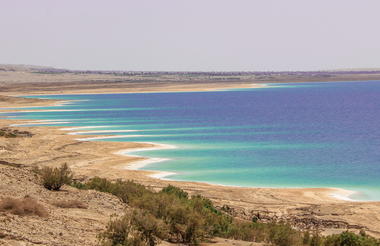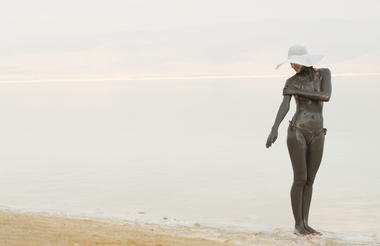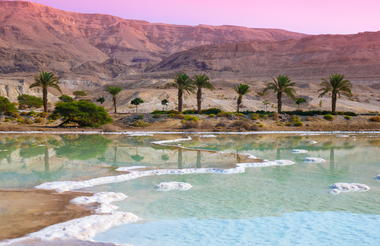Resting on the banks of the River Nile, Cairo is the mythical Egyptian capital that has been inhabited for over 6000 years. The dynamic metropolis is an exciting commingling of historical and contemporary offerings, vibrant streets and diverse neighbourhoods. The numerous heritage sites offer a glimpse into its Islamic and Coptic histories, including the renowned Al-Muiz street, Amr Ibn Al-As Mosque, the Hanging Church, and the Saint Samaan Monastery. The bustling tourist hub of Tahrir Square features the world-renowned Egyptian Museum displaying an array of antiquities, including mummies and King Tutankhamun artefacts. After that immersive foray into the past, pull yourself to the present and experience modern Cairo. Visit the baladi bars of downtown Cairo, shop at the Khan al-Khalili Bazaar, watch the sunset from the impressive Cairo Tower, or be entertained at the stately Cairo Opera House. The city's diverse nightlife options range from the traditional bars and coffee houses of downtown Cairo to the upscale Western clubs and bars of the affluent neighbourhood of Zamalek.

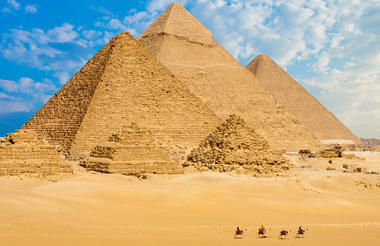
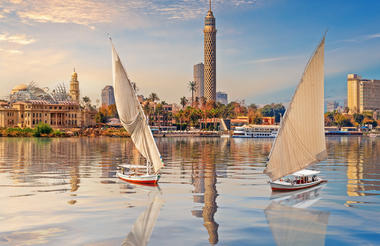
Resting on the east bank of the infamous Nile River in southern Egypt, the city of Luxor is renowned for its many well-preserved monuments, so much so that it has been described as the world’s greatest open-air museum. Luxor is often divided into three different areas; the city of Luxor on the east side of the Nile, the town of Karnak further north and Thebes on the west side of the Nile, across from Luxor. Visitors can look forward to a variety of accommodation and an abundance of exciting activities – Luxor knows how to accommodate tourists as it has been doing since ancient times. Don’t miss the Karnak and Luxor Temples, as well as the Valley of the Kings and the Valley of the Queens.



As previously described



Resting on the western bank of the Nile, just south of Luxor, the market town of Esna boasts a scenic riverfront, a collection of ancient structures and a vibrant weekly market. It once served as an important stop along the camel-caravan trade route between Egypt and Sudan during the 18th Pharaonic Dynasty and today it is a popular stop for cruises. This hidden gem of a city features a tranquil atmosphere which is livened up by Esna’s tourist-oriented market on Saturdays, where visitors can purchase fabric and have one-of-a-kind clothes made. Visitors can also explore the old streets and temples, stroll along the scenic banks of the Nile and admire the ancient architecture of Esna’s old houses, featuring fine brickwork and elaborate mashrabiyya (wooden lattice screens). The undeniable highlight is the Temple of Khnum, also known as the Temple of Esna featuring grand pillars and well-preserved carvings from as late as the 3rd century AD. Don’t miss the opportunity to view the Fatimid-era Emari minaret, one of the oldest in Egypt.



Resting on the west bank of the Nile River between Esna and Aswan, the historic town of Edfu is the location of the famous Temple of Horus. Considered the best-reserved temple in Egypt and dating back to the Ptolemaic times (237 - 57 BC), the temple has played a dramatic role in today’s understanding of ancient Egypt, including our knowledge of its religion, lifestyle, and language. The temple is decorated with intricate and varied scenes depicting marriages, deities, and the birth of its namesake god, and exhibits a combination of both Egyptian and Greek architectural elements. Other highlights include the ruins of one of seven small provincial step pyramids, and two temples considered second only in importance to the Temple of Dendera. Modern Edfu is a bustling hub producing renowned pottery.



Situated north of Aswan, on the eastern bank of the Nile River in Egypt, the ancient city of Kom Ombo is famous for its unusual riverside double-temple honouring Horus the Elder (Haroeris) and Sobek (the crocodile god), and its attached crocodile museum. The building is especially distinctive in its dual, mirror image structures and even features a double altar. At the crocodile museum, visitors can see crocodile mummies and other artefacts which give insight into the sacred place the animals had in ancient times. The town is also notable for being home to an original community of peasant farmers as well as a large population of Nubian people and is surrounded by beautiful sugar-cane fields. Kom Ombo makes for a fantastic day trip from both Luxor and Aswan and is a popular stop on river cruises.



Spread across seven hills, Amman, the capital city of Jordan, is a sprawling modern metropolis. While many travellers to the Middle East overlook Amman in favour of more celebrated destinations such as Wadi Rum, the Dead Sea and Petra; those discerning enough to add Amman to their itinerary will enjoy the treasure trove of hidden surprises this modern capital city has to offer. The city features a bustling maze of busy streets and is divided into two distinct areas. The first is Western Amman, with its lush residential suburbs, elegant restaurants, stylish bars, and state-of-the-art shopping malls. This modern sophistication stands in sharp and intriguing contrast to the laid-back Eastern Amman, boasting a more traditional, earthy side. Spend your days visiting an array of attractions such as Amman's Roman Amphitheatre the fascinating Jordan Museum or the countless luxurious cafes.
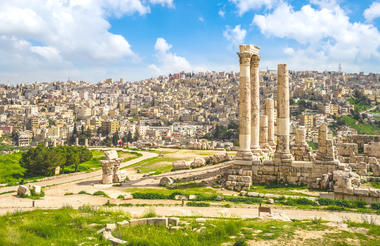
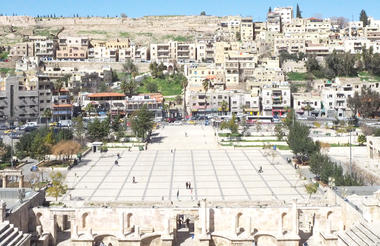
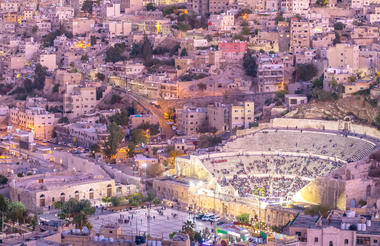
The city of Petra is one of the most famous archaeological sites in the world and Jordan’s premier tourist attraction. Carved out of the mountains more than 2000 years ago by then Nabataean Arabs, Petra is a unique example of an astonishing ancient civilization. Petra is also known as the Rose City due to the colour of the stone from which it is carved and the Lost City as it remained unknown to the western world until1812. The first European to see it was a Swiss explorer Johann Ludwig Burckhardt who disguised himself as an Arab scholar. Petra was recognized as a World Heritage Site by UNESCO in 1985.
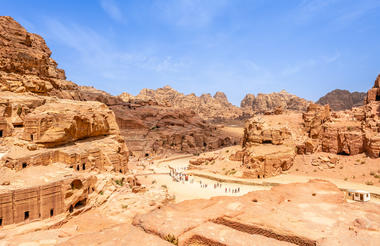
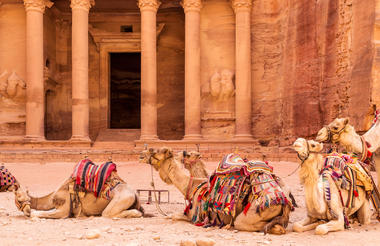
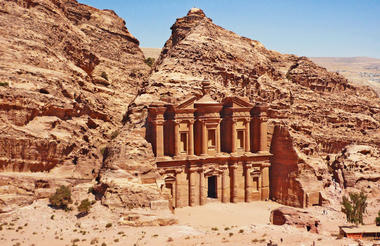
Fringing Jordan, the Dead Sea is a salt lake that lies in the Jordan Rift Valley. It serves as the main tributary of the Jordan River. This vast salty lake is one of the saltiest bodies of water on Earth with over 10 times as much salt in it as seawater. The Dead Sea is one of the most intriguing natural phenomena on earth. Visitors can float easily on the surface due to the high quantities of salt. This has made it a world-famous destination, popular for the healing property of salt for treating skin problems. It is the largest free spa on Earth, drawing both locals as well as visitors from all corners of the globe.
